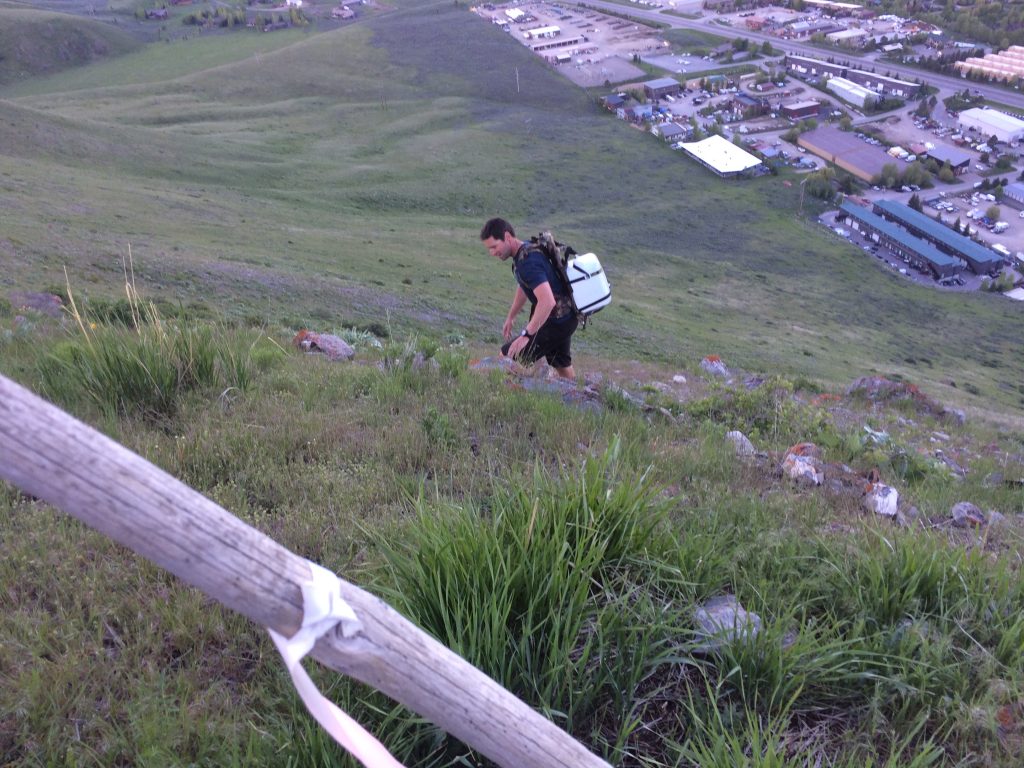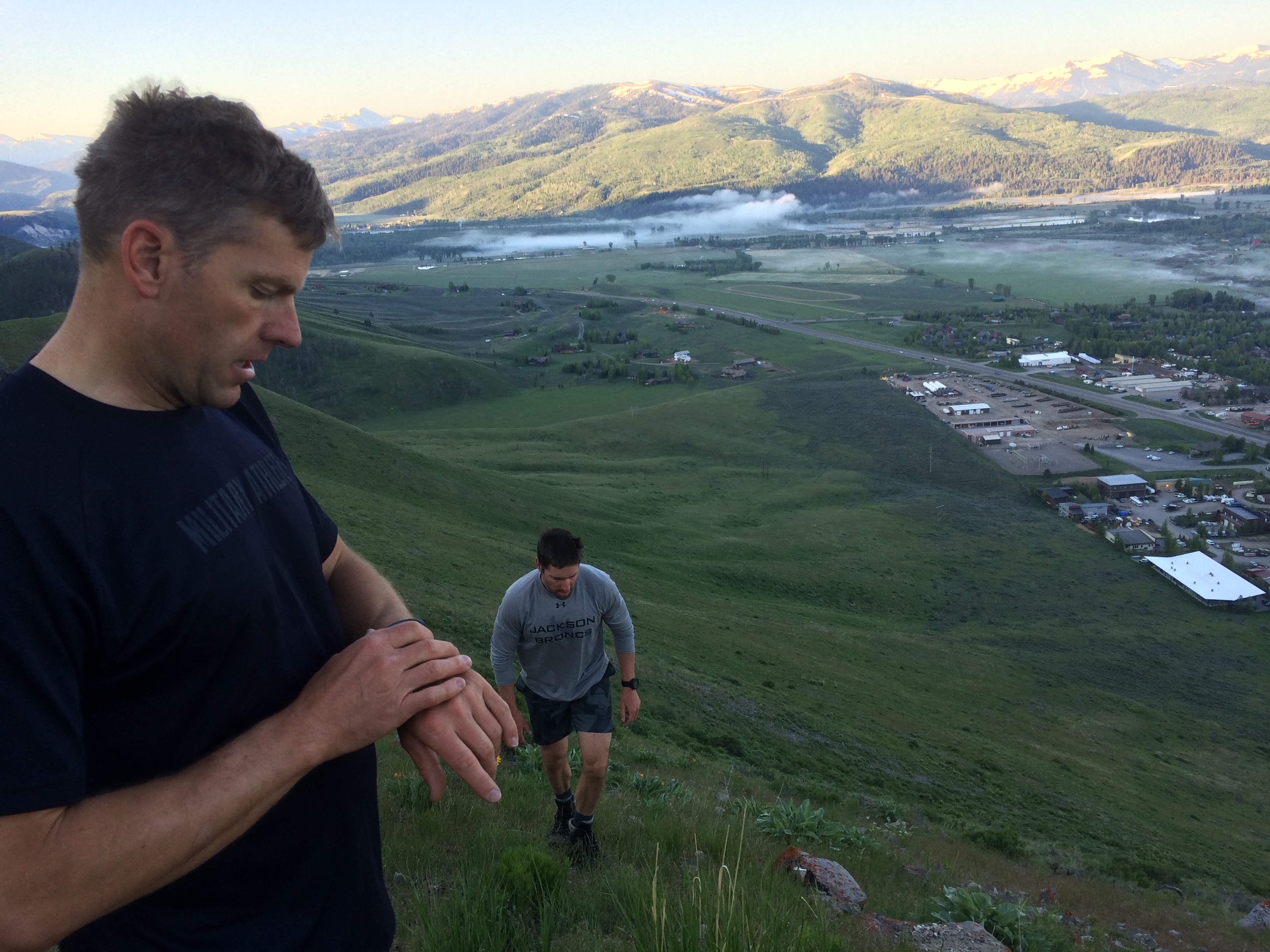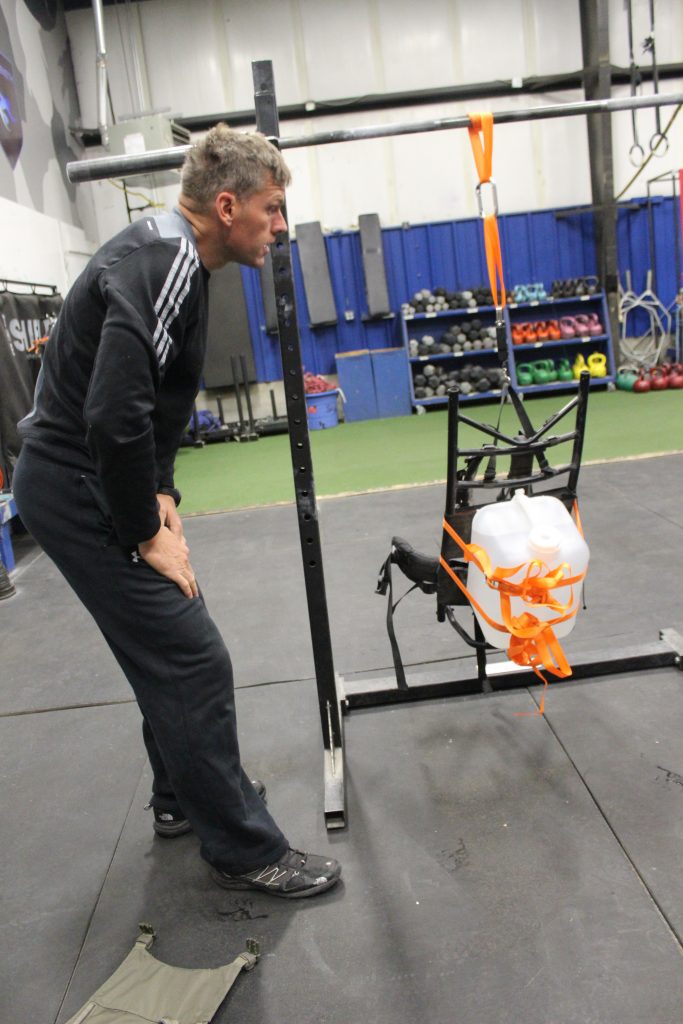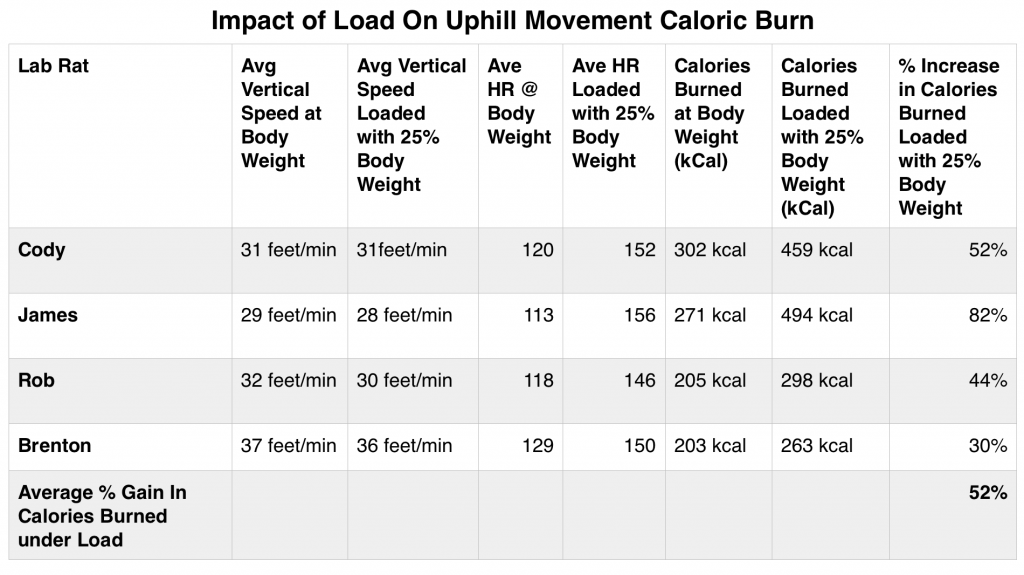
By Rob Shaul
Background
In previous Mission-Direct research, MTI has looked at several different elements of loaded movement including:
- Impact of Heavier Footwear on Hiking Pace
- Development of an MTI Route Card to Estimate Rucking and Hiking Times
- Effect of Ruck Weight on Speed from 0-70% of Bodyweight
- Efficiency Gains Using Trekking Poles
- Effect of a 10% Incline on Speed
- Best Ways to Improve Rucking
- Physical Attributes Which Relate to Rucking
- Ruck Deep Dive Pilot Study
- Load Carriage Effect’s on LT Heartrate
The purpose of this mini-study was to conduct a mission-direct evaluation of the increased caloric burn/demand from load during uphill movement.
Supplement companies such as Gu Energy, Hammer Nutrition, Honey Stinger and others offer carbohydrate gel packs and similar quick-metabolizing products for “event” nutrition – where athletes supplement their movement by digesting gel packs at regular time intervals.
Most of the energy company gel packs, for example, contain approximately 100 calories and are recommended to be consumed every 45-60 minutes during movement.
The largest market for these products is competing endurance athletes – marathoners, triathletes, road and mountain cyclists, swimmers, ultra-marathoners – and the products were designed to supplement these types of unloaded movement.
However, rarely do the Mountain professional and Tactical athletes MTI works conduct extended movements unloaded.
The goal of this study was to attain a “Mission-Direct” snapshot of the real-world differences in caloric demand between loaded and uphill movement.
Study Design
Test Subjects: Four long-term male MTI Lab Rats, ages 41-48.
Course Event: 795-Foot Vertical cross-country (no trail) vertical hike at a significant grade.
Mission-Direct Element:
We were determined to conduct this study outside the lab, under realistic conditions. This presented a unique challenge in that to assess the differences in caloric burn between unloaded and loaded climbs, study subjects had as best possible maintain the same pace/speed during both trials.
Because of the vertical element of the hike, using gps pace is not accurate or possible. We needed another measure and partnered with Finnish sports watch and precision instrument maker, Suunto.
Suunto’s Ambit 3 Vertical watch was specifically designed for alpine athletes such as ski mountaineers who use vertical speed as an assessment and training tool. The Ambit 3 Vertical measures vertical speed using barometric pressure.
Suunto provided MTI with Ambit 3 Vertical (HR) watches for this Mini-Study. In addition to the watch, each athlete wore a Suunto chest strap heart rate monitor which connected wirelessly to the watch for recording. Each watch was “personalized” to the subject wearing it with sex, age, and body weight.

Trials
For Trial (1) Subjects hiked the course carrying 25% of body weight. Prior to the hike, each lab rat weighed himself and used a pack frame and water as loading to reach the 25% bodyweight load. The pack frame and water were both added to reach the prescribed loading. Loads ranged from 38-52 pounds.
The first trial was conduced at a “moderate” perceived exertion pace – “comfortable but not easy.” The Suunto watch recorded vertical gain, average vertical speed, average heart rate and total caloric burn in kCal.
At the top of the course, the data collection was stopped, water dumped out, and athletes returned to the start point unloaded.
Between trials, the average vertical speed for Trail (1) was calculated.
Trial (2) was conducted unloaded, four days after Trial 1. The subjects hiked the same vertical route, but this time their average speed was displayed on the Suunto watch, and the subjects were instructed to within 1 foot/minute of their Trial 1 (loaded) speed.
At the top of the course data collection was again stopped and the data sets from Trial (1) and Trial (2) compared.
Completion times for the climb ranged from 19:15 to 25:10 depending upon the individual subject.

Results
The Suunto Ambit 3 Vertical watch determines caloric burn using each individual subject’s personal information (sex, age, body weight) and event heart rate. The chart below shows the results.
Three of the four subjects were able to maintain an average vertical pace between trials of 1 or fewer feet/minute. The difference in caloric burn ranged from an increase under load of 30% to 82%.

Discussion
It should be no surprise that adding load and maintaining the same pace will result in a higher heart rate, and thus result in an increase in caloric burn over the same course. However, the percent increase is somewhat surprising – an average of 52%.
The quick takeaway would be to increase gel-based event supplementation by 50% over manufacturers’ recommendations for loaded movement. However, it gets more complicated.
Previous studies have shown that athletes can absorb just 150-200 calories per hour, depending upon the athlete, exertion rate, etc. However, the scientific literature on any standard is mixed and coaching experience from the endurance sport world suggests the “gut” can be trained for each athlete to increase caloric absorption.
Also, loaded movement increases heart rate because it takes more strength (energy) to move. Hammer Nutrition recommends protein supplementation in addition to carb supplementation during unloaded endurance events beyond 2+ hours. This raises the question of earlier, or only, carb/protein supplementation for loaded movements.
Action Items/Moving Forward
- Test the differences in caloric burn for unloaded and loaded movement over flat terrain.
- Test different supplementation protocols including carb-only frequency, carb-protein mixtures at different levels and frequency.
- Develop a “Mission-Direct” individual test for caloric absorption during loaded movement.
Questions, Comments, Feedback? Email coach@mtntactical.com
You Might Also Like Inconclusive Results on Varying Energy Gel Dosage and Carb/Fat/Protein Supplement Recipe Mix for Loaded Event Performance
